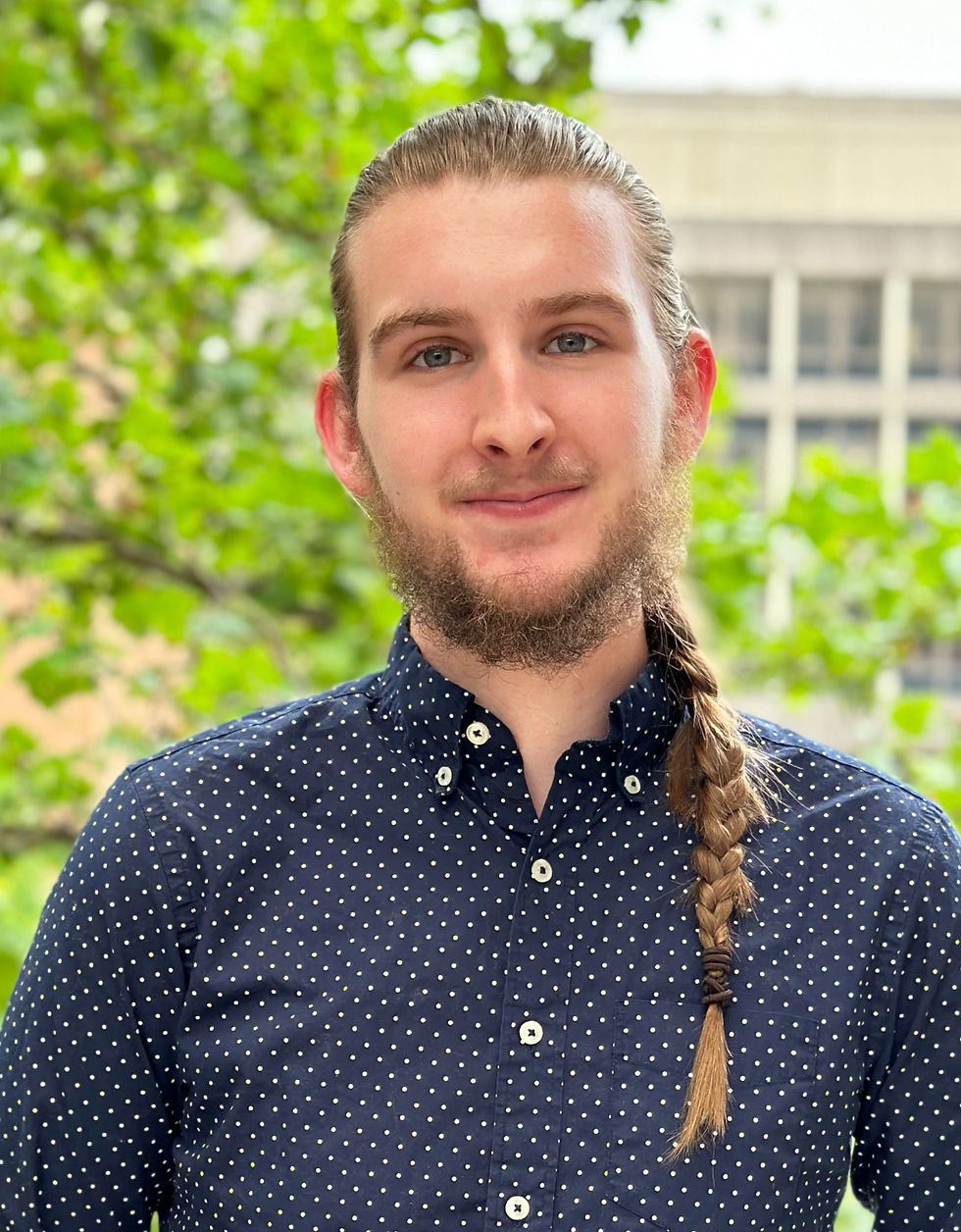- Anna G

- Jul 31, 2023
- 2 min read
Updated: May 16, 2024

My name is Amy Apfelbaum. I am a rising junior studying Biochemistry at DePauw University. This summer I am excited to work in Dr. Anthony Grillo’s lab under my mentors Raghav Dutta and Alaa Hassan. The Grillo Lab is focused on understanding the mechanisms of mitochondrial complex 1 dysfunction in neurodegenerative diseases. It has been shown that an early feature of neurodegeneration is complex 1 dysfunction; we are trying to determine if this is a cause or an effect of these diseases. To begin with, we will be focused on identifying different types of neuron subtypes in brain tissue samples. This is important because neuron subtypes have distinct roles in cellular communication and different types represent different neurodegenerative diseases. Therefore, knowing what types we have in our samples will help us in developing novel neuron cell models of specific diseases. Further, we will be working to isolate primary neurons by first identifying and visualizing the types of brain cells present in brain tissue samples. Finally, we will be working to image protein aggregates which are thought to be a major cause of aging diseases, such as Alzheimer's and Parkinson’s Disease. For our experimental steps, we are working with complex 1 knockout mice, as they give insight into how mitochondrial failure affects cellular physiology, giving us a better understanding of the pathogenic mechanisms that induce these genetic, aging, and environmental diseases. We will use two common techniques of western blot and immunofluorescence to accomplish these tasks and discover what exactly we are working with. Being able to gain experience in an interdisciplinary research lab that combines biochemistry, neuroscience, and physiology has given me the skills and confidence needed to grow as an eager scientist, and I am excited to see all my progress this summer.
Listen to Amy's story below
- Anna G

- Jul 31, 2023
- 1 min read

Hello, my name is Trinity Bartleson. I am from Cincinnati Ohio, and I’m a senior at Central State University. I am a Sustainable Agriculture major with a minor in Biology. When I obtain my undergraduate degree in the year 2024, I plan on attending Veterinarian medical school. This summer I am working in Prof. George Stan’s lab to understand the effect of force field by molecular dynamics simulations of anionic surfactant sodium dodecyl sulfate (SDS) micelles. The goal of this project is to study the atomistic details of the molecular dynamics simulations, calculate the T1 relaxation times of different carbon atoms on SDS and compare them with NMR experimental results. To this end, I am using GROMACS, Visual Molecular Dynamics (VMD), and Python software to run simulations, visualize them and analyze the results, respectively.
- Anna G

- Jul 31, 2023
- 1 min read
Updated: May 15, 2024

My name is Xander Cikanek. I am a rising junior at University of Rochester, and this summer I am working with Dr. Strobbia and Dr. Kissel. Traditional lateral flow assays (LFAs) use colorimetric detection: tags attach to a test line and the operator receives a diagnostic response for a specific pathogen or biomarker by observing the line color. This method of detection has several disadvantages, including limited quantification capabilities and low sensitivity. By using surface-enhanced Raman scattering (SERS) tags in lateral flow assays (SERS-LFAs), we can overcome these disadvantages at the cost of adding a Raman reader. In this work, various nanomaterials were prepared and characterized to identify the optimal material for SERS-LFAs. We tested gold nanospheres, gold nanostars and silver coated gold nanostars to identify particles with ideal plasmonic properties, stability in solution, flow within the assay’s paper, and SERS signal. To ensure the consistency of these SERS-LFAs, the nanoparticle concentration, Raman reporter concentration, and stability of the nanoparticles must be predictable. To establish a reliable concentration-optical density relationship, UV-Vis spectroscopy and nanoparticle tracking analysis were employed. Once concentration could be reliably predicted, the nanoparticles were functionalized with a Raman reporter molecule and characterized. Finally, the nanomaterials were tested on LFA’s using a lab-built Raman reader to scan the LFA strip. Our work provides the basis for understanding the role of different plasmonic particles in SERS-LFAs.
Listen to Xander's experience in the REU program.
